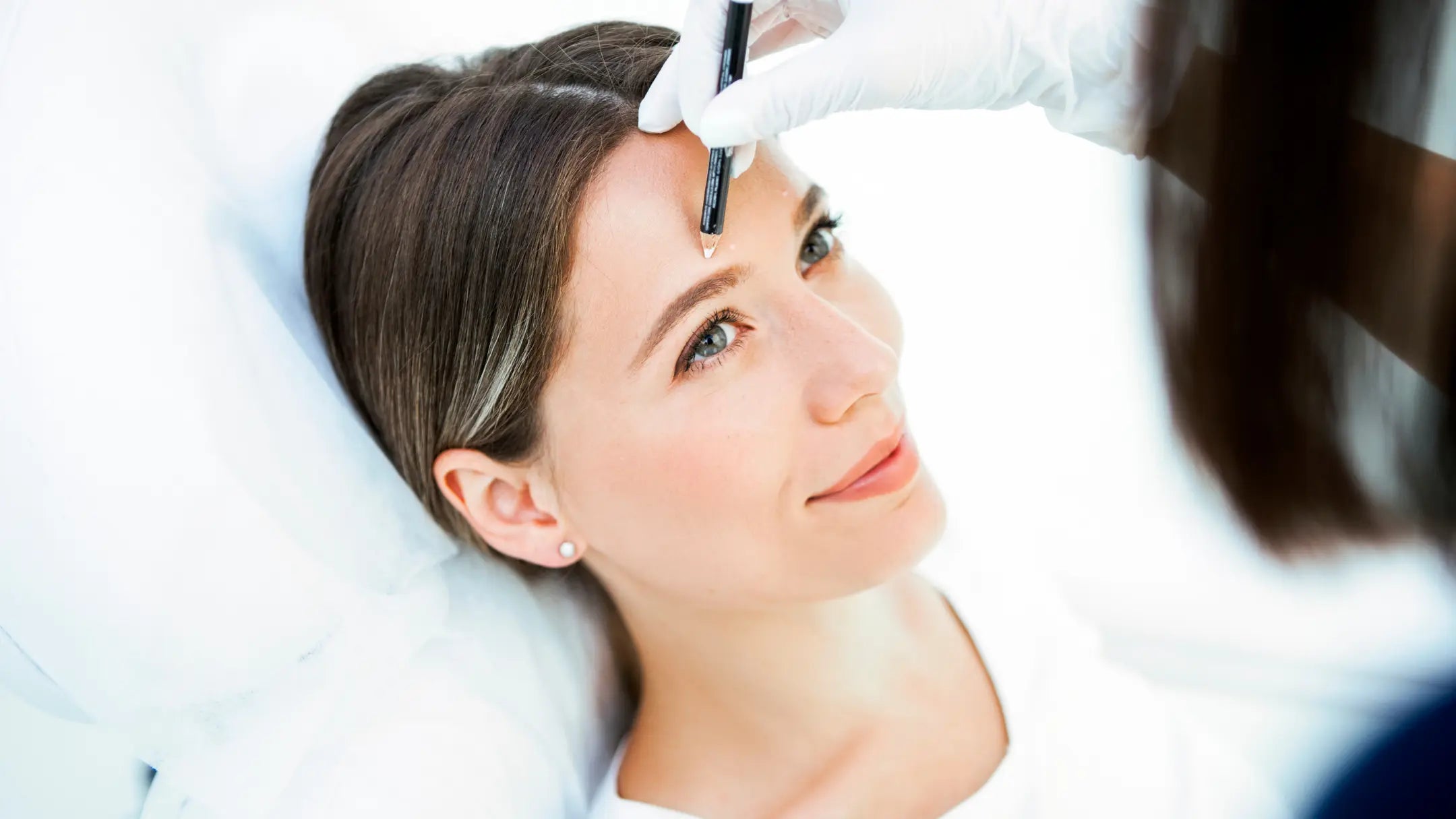5 Things to Know Before Neuromodulator Treatment

Neuromodulator Treatments: An Introduction
Neuromodulator treatments are all about smoothing out those lines on your face that time has drawn. This is a real wham-bam approach to looking refreshed without the knife. Here’s the deal: these treatments temporarily relax certain facial muscles, putting wrinkle-making expressions on pause. Do not confuse this with an eternal fountain of youth. The results can last about 3-6 months before your body says, “Alright, time to go back to business as usual,” and you might just need another treatment. So when you do get some work done on those facial lines, remember it’s not one-and-done. Also, do make sure that you go to a professional.
Learn About the Different Types of Neuromodulators
Neuromodulator may seem like a fancy word, but they are simply the medical term for products I can't mention because Google won't let me run ads if I do. These treatments aid in the relaxation of muscles that contribute to wrinkles, therefore giving your skin a relaxed and smoother look.
Preparing for Your First Neuromodulator Appointment
Preparing for your first neuromodulator appointment doesn’t have to be scary. Keep it simple: here’s how. First, do a little preparation. You know the worries you want to see addressed through the treatment — maybe it’s lines or wrinkles — so be sure to express those goals to the provider. Next up, lay low on the makeup. Skin should be clean and bare for the treatment, so be prepared to come without makeup or ready to take it off. Then, notify them of any medications you may be on. Some—such as blood thinners—may affect your treatment, so you need to keep your provider in the loop. And don’t plan to hit the gym right after. Allow your body to settle after the treatment before you resume your heavy workouts. Lastly, have realistic expectations. The results can take a few days to show, so give it some time. These tips will leave you set for success and a smooth first experience.
Most Common Myths About Neuromodulator Treatments
A lot of people get the wrong idea about neuromodulator treatments. They think it is only for the rich and famous or that you are going to end up with a face looking frozen. Let’s clear the air:. First things first, neuromodulator treatments are not just for the rich and famous. Men and women of all ages undergo these treatments for a variety of reasons—from reducing wrinkles to controlling migraines. And the cost? Not as much as you think, it is actually pretty affordable when you look at how long it last. And the frozen look, that typically means you got a Groupon. When done properly by a skilled professional, you can still make all your usual facial expressions. You’ll just look a bit fresher doing it. Another common myth is that you can’t stop once you start because your skin will get worse. Nope, that’s not how it works. If you decide to stop your treatments, your skin will gradually return to how it was before, not worse. Lastly, some believe these treatments are unsafe. Truthfully, neuromodulators have been around for decades and are approved by governmental health agencies like the FDA. They are safe when performed by an experienced professional. So, ignore all that you’ve heard and do your own research. These treatments are not just for vanity; they offer concrete benefits to a variety of issues.
What to Expect During the Procedure
Be prepared for things to go fast during your first neuromodulator treatment. The practitioner is going to discuss your goals with you and assess your facial structure in order to determine the most appropriate injection sites. The actual procedure is quite quick and typically only takes a few minutes. You may feel a pinch or some minor discomfort when the needle is inserted, but it’s generally well-tolerated. There is no real downtime; you can get right back to most of your day’s activities. But do not rub the treated areas, and try not to work out too much for the next 24 hours so that the neuromodulator can settle in properly. Some people notice results within just a few days, but it can take up to 2 weeks for full effect. Keep in mind, all experiences may vary slightly.
Possible Side Effects and How to Minimize Them
When you get treatments with neuromodulators, there could be a few side effects. Common ones? Some swelling, bruising, or redness in the area where the injection went in. Some patients may also experience a headache or even flu-like symptoms for a couple of days. Very, very occasionally the medication may cause some diffusion and affect places where it wasn’t supposed to initially, leading to things like muscle weakness or eyelid drooping. Not to worry too much; these are far from the norm. How do you avoid these side effects? Well, first is by having the proper provider. Skilled injectors know where to put and how much to use to mitigate side effects. Before your treatment, stay away from alcohol and anti-inflammatory meds since they can increase your bruising risk. Afterward, don’t rub or massage the treated area so you don’t spread the treatment to places it shouldn’t go. Remember, a bit of pre-homework in finding the right provider and following these pointers can go in a long way so you look good without the extra fuss of dealing with side effects.
Post Treatment Care and Maintenance
How you care for your treated areas following treatment has a lot to do with how great your results will be. First off, don’t touch or massage the treated areas for at least 24 hours. This will help to keep the product right where your provider put it to make sure it works just as it should. Then, 24 hours without heavy workouts, saunas, or anything that could cause you to overheat. Exercising vigorously afterward will distribute the product outside of the targeted muscles. Also, stay sitting or standing straight up for a few hours post-treatment; don’t go lie down or bend over, which means scheduling your nap or yoga session for later. And remember, patience is crucial. Normally, you will see the full effects of your treatment within 3 to 14 days, so just take a breather if you don’t see immediate results. Finally, stick to the plan for follow-up outlined by your provider; they definitely know best how to maintain your results. If they advise that you come back for a touch-up or for your next appointment to be in a few months, just listen to them; they are the experts. Sticking with these simple steps will ensure you get the most out of your treatment and enjoy those smooth, refreshed looks for as long as possible.
How Long Before You See Results?
After you’ve had your first neuromodulator treatment, expect to wait a little while before seeing the results. It normally takes about 3 to 5 days before any changes can be noticed. However, the total effect is visible only about two weeks after the treatment date. Hence, if you are preparing for an important event and need your perfect look, book that appointment a good two weeks before. As it is rightly said, patience is key here; your skin needs time to respond to the treatment. Good things come to those who wait.
Scheduling an appropriate follow-up treatment is a requirement for keeping up those smooth results. In general, you would think about booking your next appointment 3 to 4 months after the initial one. This is because the muscles will gradually start to recover their movement, and those lines and wrinkles will reappear. Well, now you’re probably starting to see why results can fade more quickly if you’re using the treated muscles more than you realize. But that’s okay. It’s actually pretty normal for the longevity of effect to be a little different in each person. What counts most is staying on a treatment schedule. In fact, with regular treatments, some patients feel they’re able to extend the time between treatments. That may cause your muscles to respond in a way that produces optimum results, letting you enjoy that silky result for longer. So mark your calendar now and chat with your provider to pin down the best timing for your skin’s needs.
Final Thoughts: Is a Neuromodulator Treatment Right for You?
Neuromodulator treatments are a big decision. They can smooth out wrinkles and give your skin a fresher look, but they’re not for everyone. Think, first of all, about your motivation: are you seeking the treatment for yourself or is somebody else pushing you into this? You should feel right about making the choice. Second, consider your health. If you have certain conditions like skin infections or muscle disorder, it’s a no-no. And of course, do not forget that results are going to be different - some people see a huge difference, others may not see as much. The last point is the relevant provider. A professional, highly trained and experienced, can make all the difference in the issues of safety and results. Is it, right for you? You are the only one who can decide, but make that decision based on real facts not what you see in the movies.






Comments